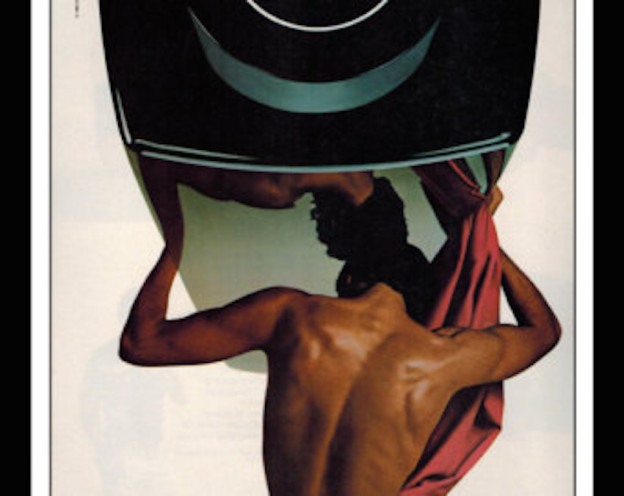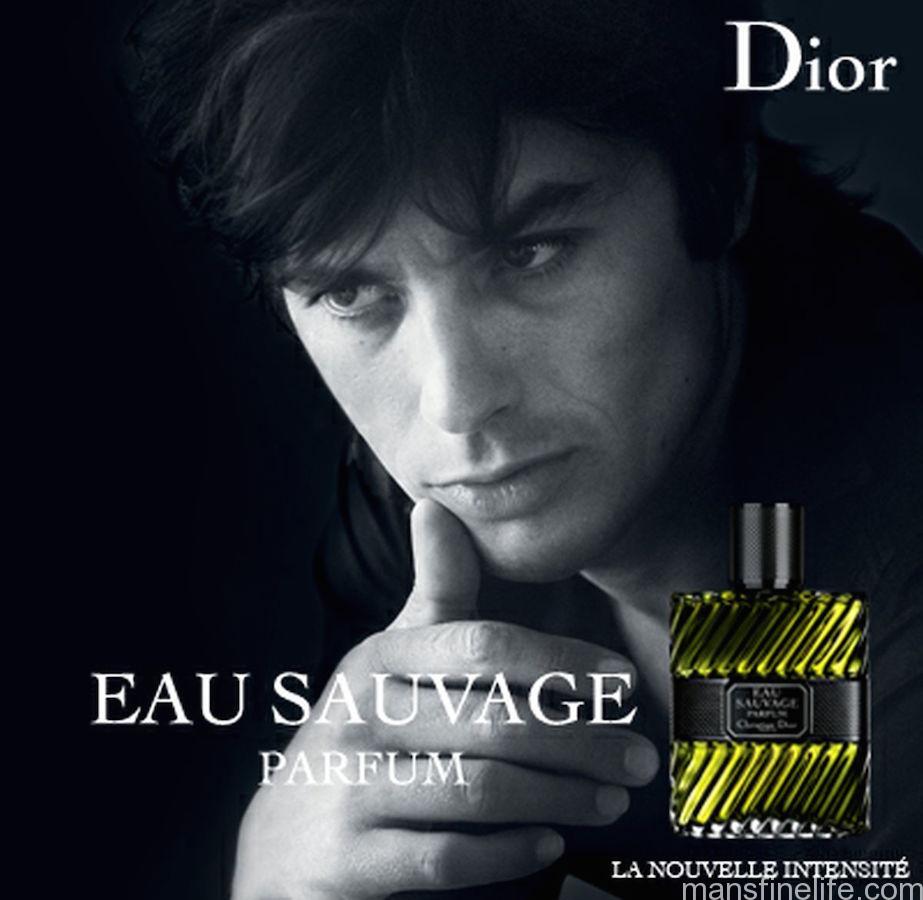Because looking good is only half the battle we’re starting a new feature here on MFL: Men’s Cologne. After all, when you’re suited & booted for work or play you want to smell just as fine as your outift, don’t you? Now, we don’t claim to be the world’s greatest experts on men’s scents or be the biggest noses (that’s perfume speak for “connoisseur”). But we know what smells good to us. We don’t really mess around with unisex scents or go in much for stuff that smells like a fudge browny. We’re also not afraid to go back in time to pick something classic from the 70s or the 80s or even older. Who says you can’t wear something your dad rocked back in the day? On rare occasions sometimes we may even go hunting an old vintage or discontinued frag. But we’re definitely not afraid to try something new or popular.
That said, we also don’t want to be identified as “Cologne Guy.” A man’s fragrance should certainly be noticed in a positive fashion, maybe even complimented, but it shouldn’t speak louder than he does or try too hard. When you’ve got the right cologne on it compliments but doesn’t drown out your other positive qualities. In other words, you don’t want people saying “Nice suit but what the hell was that smell?” In short, we want to smell manly and good, just as a guy should, and from here on out we’ll be sharing our favorite and not so favorite colognes with you and our honest opinions of them. If you’re then tempted to try one or two on our recommendation then have at it. Keep in mind that smell is a very personal sense and you may not always agree with what we choose to wear. But we think that more often than not you’ll like what we’re spritzing on, as well as our advice on how and where to use it. It’s a big wide world out there and smell is one of the most subliminal and effective ways to communicate your own personal cool — might as well try out some new fragrances to help you feel your best and put the finishing touches on your style.
Before we get to the reviews, here are a few basics on terminology that will make the discussion easier.
Basic concentrations of cologne by strength:
- Eau de Cologne (EDC) — Generally a lighter grade of scent, perhaps a little stronger than aftershave but doesn’t last long and generally is not that powerful smelling, though some may start out strong/loud. Most EDC’s are sort of eye openers to start the day before graduating to something more substantial.
- Eau de Toillette (EDT) — The most common strength for most premium men’s fragrances — you & I may refer to it as “cologne” but chances are any given fragrance off the shelf with any lasting power is going to be an Eau de Toilette. Can be strong and long lasting depending on the scent but generally reasonably moderate in both departments.
- Eau de Parfum (EDP) — A stronger concentration than an EDT, an Eau de Parfum allows the perfumer to enhance the depth and lasting power of a fragrance generally speaking. While it should always smell similar to the EDP version, an EDP (often marketed as “intense” these days) can also take some liberties that essentially turn it into an entirely new scent (for example the differences between the classic Eau Sauvage by Dior and the modern EDP version). Generally powerful and long lasting and for guys who are comfortable wearing something with a lot of strength behind it. When in doubt, start with the Eau de Toilette then graduate to the Eau de Parfum.
- Parfum — Also called simply Perfume or extrait de parfum/perfume extract, this is the least diluted strength of a fragrance and therefore the most powerful. This doesn’t really come up that often for men’s scents unless you are deep into intense fragrance and are a niche fan or serious scent head. Only for the very brave, ballsy and experienced.
Important Qualities for a Fragrance:
- Longevity: Self-explanitory, this is how long a fragrance lasts. This can vary from person to person depending on skin type and other factors like the weather like temperature and relative humidity. This is not directly connected to the power of the fragrance per se, as even when your cologne is no longer making an impression on anyone more than a foot away, if you can still smell it on your skin (“skin scent”) then that still represents longevity. And more often than not, fragrances linger longer on clothing than on one’s skin.
- Sillage: A French word (pronounced see-yazh) that refers to your personal vapor trail while wearing a fragrance. It essentially defines the way your cologne wafts in the air and can be detected by others. Generally speaking, if you are wearing something pleasant and that you like, sillage is desirable in that you are making a statement with your cologne so other people should be able to detect it in a subtle but perceptible manner.
- Projection: Sometimes used interchangeably with sillage, projection is slightly different in that it refers to the sort of radius that your chosen scent throws off. Does your cologne enter the room before you do? That’s projection. If you gesture with your hands a few hours after applying your cologne and a pleasant waft of it is newly stirred up, that is more like sillage. Some people love colognes with a lot of projection and some prefer to keep it a bit closer to the body. Depends on what kind of guy you are, the social setting you’re in — maybe what you wear to a nightclub is not so appropriate for the office — and how much of a statement you want to make.
Obviously, while some Eau de Toilettes and Parfums are stronger than others, one should be able to meter out projection and sillage somewhat by the amount of scent one applies. In other words more spritzes equals more and less equals less. Keep in mind that long after your nose has grown used to your favorite fragrances over the course of the day or evening (“olfactory fatigue”) others around you will be smelling it with fresh nostrils. Try not to go too heavy on the the application and choke anybody out until you get a good conception of how powerful what you’re wearing really is. You’re wife/girlfriend/significant other is usually a good sounding board for this.
Fragrance Groups:
A quick, dirty and not at all definitive reference for guys about the most common groups of men’s fragrance.
- Fougere: Deriving from the French word for “fern,” aromatic fougeres are a classic group of men’s fragrances which feature prominent roles for lavender, moss (traditionally oakmoss), woods and/or coumarin, a substance found in plants that smells something like fresh cut grass. The fragrant grass vetiver is also often deployed in fougeres, as are masculine flowers such as geranium, rose and lily of the valley. Somewhat out of fashion these days and often derided as “barbershop” scents, at least a few good fougeres belong in every man’s arsenal with their ur-masculine “green” aromas. This category is the essence of masculinity in the perfume world.
- Woody Chypre: More intensively woody and perhaps less green than a fougere, a woody chypre is another classic style of men’s cologne. Sandalwood based colognes are the paradigm of this style, although there can also be overlap with some aspect of fougeres and leather scents. For example, the classic men’s cologne from the 1960s, Aramis, is characterized as a woody chypre but also has a ton of leather mingling with more characteristic notes like like oakmoss and sandalwood. So sometimes the borders between scent groups become blurry to say the least. But generally speaking a woody chypre will be a bit more lush, less “green” and, well, more woody than a true fougere.
- Leather: These fragrances share elements of the above groups in their earthiness and sometimes herbal, woodsy qualities but a prominent leather note dominates, or at least what we perceive leather to smell like. In reality, the fragrances used to make leather smell better after the tanning process are what we smell when we smell leather along with their interaction with the hide itself. Therefore, when you smell a leather fragrance you are reminded of the masculine way a leather jacket or a luxury car’s interior smells. An enjoyable and thoroughly masculine category, although one that can often come on too strong, register as monolithic or come across as dated if not handled properly due to its popularity in past decades (the old, influential warhorse English Leather, for example, debuted way back in 1949).
- Oriental Fougere: These colognes add spices such as cinnamon and nutmeg to the mix of a standard aromatic fougere, as well as exotic materials such as the currently very in vogue Middle Eastern oud wood (agarwood). They may also come across as incense inspired. Oriental fougeres are definitely very particular and acquired tastes — one man’s heaven is another’s musty old spice cabinet. Or simply your grandfather’s old bottle of Old Spice in a cabinet. Try before you buy these generally speaking, although there are some very good ones out there and this group is particularly suitable for colder weather.
- Aquatics, Fresh and Gourmand: For good or for ill, aromatic aquatics came to dominate men’s cologne in the early 1990s, with the characteristic “clean” scent of artificially evoked beach and sea infusing a large variety of blue bottles & liquids. A distinct move away from the ultra powerful, animalic 1980s-style fragrances such as Drakkar Noir and Kouros, the aquatics began their ascent with Davidoff’s 1988 Cool Water and essentially took over men’s cologne in the over two decades since. They have somewhat been giving way recently to their very close counterpart, the “fresh” scents. Chanel’s Bleu and Paco Rabanne’s omnipresent 1 Million are two diverse examples of today’s “fresh” scents, where fruitiness and sweet qualities tend to outshine the woody or musky accords but with not as much emphasis on ocean smells as aquatics. Lastly, increasingly popular gourmand scents emphasize actual food aromas like chocolate or coffee. This may seem odd for a man’s fragrance but a premium frag like Thierry Mugler’s A*Men mixes more traditional chypre notes like cedar, bergamot and patchouli with gourmand accords like coffee, caramel and honey to generally well regarded effect. Generally speaking, we’ll take an old fashioned fougere over a cutting edge gourmand scent any day of the week.
For further, more comprehensive reference I strongly recommend visiting Fragrantica.com and Basenotes.net, both of which feature not only more detailed explanations on fragrance terminology, notes & groups but also tons of crowd-sourced member reviews on the a vast universe of scents. There are also a few particularly well-focused and entertaining men’s fragrance blogs. Two I recommend are From Pyrgos for extremely erudite and opinionated ruminations on cologne and its greater implications — his rather remarkable exploration of and obsession with different iterations of the 1970s icon Grey Flannel is worth the price of admission alone; and Pour Monsieur blog, another punchy, opinionated site with a particular fondness for 1970s and 80s power frags like Quorum, Antaeus, Kouros and Azarro Pour Homme. These two guys are really into the older school heavy stuff so I wouldn’t just blind buy what they like, as it may be too strong and/or old fashioned for your current taste. But they are both fun to read, passionate about men’s fragrances and communicate a lot of useful information, not to mention a ton of well thought out reviews. Hopefully we here at MFL can add a little something to the mix when it comes to discussing and test driving men’s cologne for you, as well!



